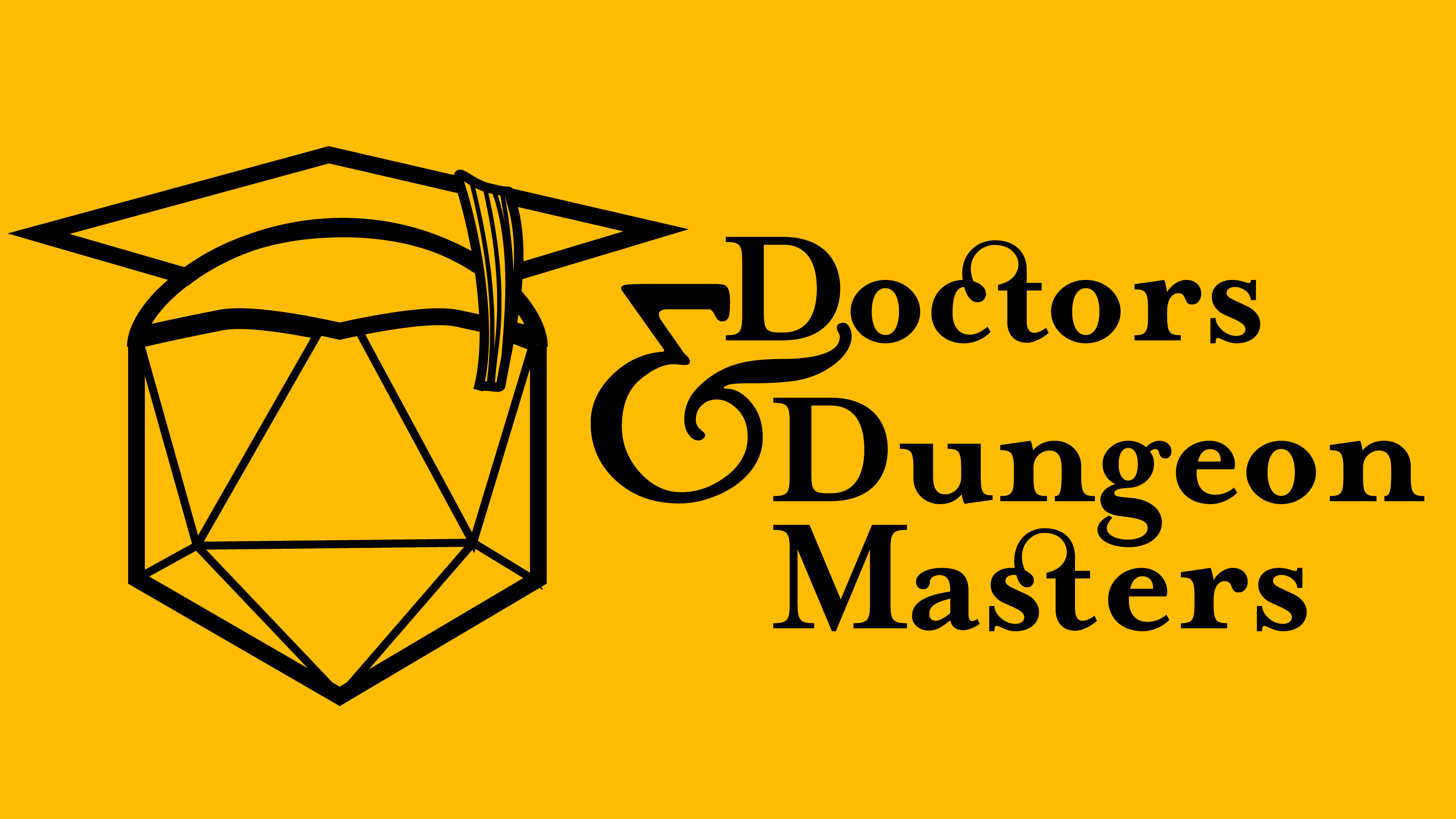By Kelly Brajevich
PhD Student, Doctors & Dungeon Masters DM
One time, my mom and I were driving in a blizzard. I was behind the wheel when I noticed a car in the opposite direction had lost control and was skidding across four lanes of traffic towards us. I white-knuckled it and waited until the very last moment to gently guide my car to the side so I wouldn’t lose control of our car with a sudden movement. The car missed us by inches. My mom turned to me and said, “that was the longest six seconds of my life!”
 I replied, “clearly, you’ve never played Dungeons & Dragons (D&D).”
I replied, “clearly, you’ve never played Dungeons & Dragons (D&D).”
For those who are unaware of D&D’s battle mechanics, each ‘round’ of combat constitutes six seconds of in-game time. Since there can be upwards of 8-10 characters in a combat, six in-game seconds can take as long as ten minutes, or even longer. Within these six in-game seconds, a player is able to have their character move and take one action (although there are certain character classes with exceptions to the rule). There are ‘bonus actions’, ‘cunning actions’, and ‘free actions’. Although each of the aforementioned actions complicate how much any given character can do in six seconds of combat, the biggest offender of the game-life temporality dissonance is the ‘free action’.
Talking, as per the Dungeons & Dragons Player’s Handbook rule set, is a free action in combat. Often, this is used as to communicate a quick command to another player’s character or to deliver a witty comment as the character deals a mortal blow to a villain. However, speaking is a free action that does not have to be done on a player’s turn, which can lead to situations that disrupt the game.
For example, in “Doctors & Dungeon Masters: Stream City’s” second session, the party was locked into combat with two non-player characters (NPCs) who were brothers. During his turn, one of the brothers used his free action to talk to make an appeal to the player character Maggs to spare his brother. Maggs had the brother pinned with a sword held to his throat. This resulted in an exchange that realistically would have lasted two minutes in-game, but combat was not declared over. In a dramatic moment, Maggs’s player announced that he drives his sword into the pinned brother’s throat, but there was a logistical issue: It was still, technically, the unpinned brother’s turn since he had not taken his action or movement yet. This not only robbed the player-character of his dramatic moment, but it also broke the realistic flow of in-game combat.
The dreaded six-second issue came up again in D&DM:SC’s third session, where the character, Franz, was face-to-face with a wererat. In the previous session, he had acquired a magical machete that would let the bearer grow a magnificent moustache. As the DM, I like to let the player-characters describe the flavorful details of dealing the killing blow. As he reduced the wererat to 0 hit points, I prompted the player with, ‘describe how that kills him’. The player responded with, “I spend the first five seconds with my machete raised, growing the most glorious mustache anyone has ever seen and in my last second, I decapitate him.”
In most situations, the dissonance between the passage of in-game versus ’real world’ time goes unnoticed by players or it is simply accepted as part of D&D. However, there are certainly times where the rules of gameplay and the disjointed passage of time affects the authenticity of in-game situations and the passage of game-time.
Be sure to tune in the next session of Doctors & DMs on Serious Play (Mondays 3-6pm) – and follow the campaign notes on the Doctors & DM’s blog.
Watch Doctors and Dungeon Masters: Stream City from Serious_Play on www.twitch.tv
